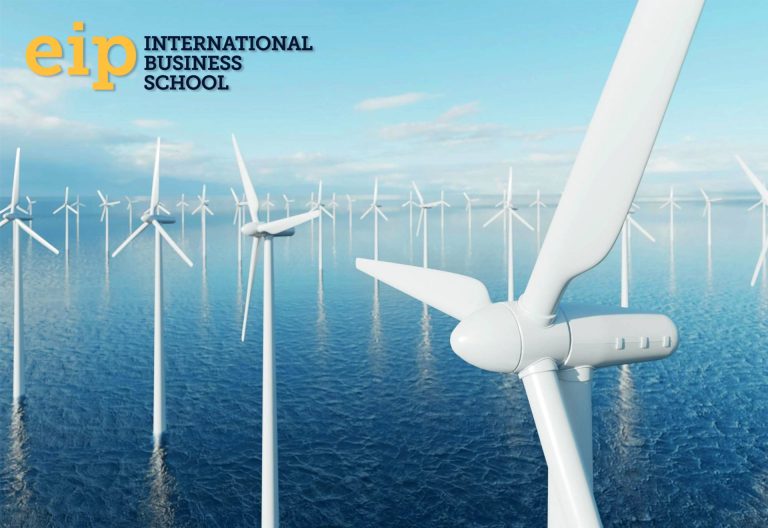With the need to reduce greenhouse gas emissions and move towards a more sustainable energy matrix, Offshore wind energy, also known as energy offshore wind, has emerged as a promising and constantly growing source of renewable energy, presenting itself as an efficient and profitable solution.
The offshore wind energy It is a promising way to harness ocean winds to generate electricity in a clean and sustainable way.
One of its main features is its potential. Offshore wind farms are located in coastal and offshore areas, where winds are more constant and stronger than on land. This allows optimal use of wind energy and greater electricity production. Additionally, offshore wind farms have the ability to be built in deeper waters, expanding location possibilities and maximizing power generation potential.
This type of installations also has economic advantages. Although initially the installation of offshore wind farms may have a higher investment cost, technological advances and the scale of the projects are leading to a decrease in costs. Furthermore, the employment generation and local economic opportunities associated with the development and maintenance of offshore wind farms are considerably significant.

The Advantages of offshore wind energy
Offshore wind energy offers a series of positive points that make it an attractive and promising source of renewable energy. Below are ten of its most notable advantages:
1. Unlimited potential: Offshore wind farms have access to stronger, more consistent winds compared to onshore farms, meaning greater power generation potential.
2. Constant generation: Offshore winds tend to be more consistent, allowing for more stable and predictable electricity production compared to onshore wind power.
3. Less environmental impact: Offshore wind farms have a reduced environmental impact compared to other energy sources, since they do not generate greenhouse gas emissions or atmospheric pollutants.
4. Soil conservation: By being located in the sea, offshore wind energy avoids the need to occupy large areas of land, thus protecting terrestrial ecosystems and biodiversity.
5. Exploitation of inaccessible areas: Offshore wind farms can be installed in deeper waters, making it possible to take advantage of areas that are not accessible to onshore wind energy.
6. Greater generation capacity: Offshore wind turbines are larger in size and have greater generating capacity compared to land-based ones, maximizing energy production.
7. Energy stability: The diversification of energy sources, including offshore wind energy, contributes to greater stability of energy supply and reduces dependence on fossil fuels.
8. Economic boost and employment: The construction and operation of offshore wind farms generates local employment and creates economic opportunities in nearby coastal communities.
9. Costs reduction: Technological advances and the larger scale of projects are leading to a decrease in the costs of offshore wind energy, making it increasingly competitive.
10. Contribution to the fight against climate change: As a renewable energy source, offshore wind energy helps reduce greenhouse gas emissions and mitigate climate change.
These ten positive points highlight the key advantages of offshore wind and support its fundamental role in the transition to a more sustainable and carbon-free energy mix.

The Challenges of Offshore Wind Energy
However, There are challenges to overcome in the expansion of offshore wind energy. The infrastructure and technologies necessary for the construction and operation of offshore wind farms require considerable investments. There are also aspects related to environmental impact and interaction with marine life that must be addressed in a responsible and sustainable manner.
The implementation of this technology requires taking certain precautions to guarantee its safety and minimize its environmental impact. Below are some of the main precautions to consider:
1. Environmental impact studies: Before installing offshore wind farms, it is essential to carry out exhaustive environmental impact studies to evaluate possible effects on marine life, migratory birds and marine ecosystems in general. These studies help identify the most suitable areas for the installation of wind turbines and minimize their impact.
2. Proper design and construction: Offshore wind turbines must be designed and built to withstand extreme environmental conditions, such as storms and intense waves. Additionally, rigorous engineering and construction standards must be followed to ensure the safety of the structures and their efficient operation.
3. Navigation and maritime safety: Offshore wind farms must be located so that they do not interfere with maritime shipping lanes. Appropriate maritime safety measures, such as signage, must be established to avoid collisions and ensure the safety of vessels.
4. Maintenance and access: Maintenance of offshore wind turbines requires trained personnel and specialized equipment. Safe procedures must be established for access to the turbines, whether by boat or helicopter, ensuring the safety of workers and minimizing risks during maintenance operations.
5. Monitoring and tracking: It is essential to carry out continuous monitoring of offshore wind farms to evaluate their performance, detect possible problems and ensure their correct operation. This includes monitoring wind conditions, energy production, environmental impact and other relevant aspects to optimize your operation and mitigate any negative impacts.
These precautions are key to ensuring the safety and success of offshore wind energy projects.. By meeting these requirements, the potential of this renewable energy source can be harnessed in a responsible and sustainable manner.
Despite these challenges, offshore wind energy is emerging as a key component in the transition towards a cleaner and more sustainable energy matrix. With significant potential and environmental and economic benefits, its continued expansion and development are critical to achieving climate change mitigation goals and ensuring long-term energy supply.
In conclusion, Offshore wind represents an exciting and promising opportunity in the renewable energy space. Its capacity to generate clean electricity, its expansion potential and its environmental and economic benefits make it an attractive option to promote a sustainable energy future. With continuous technological advancement and adequate support of policies and regulations
Discover the fascinating world of wind energy and become a leader of change.
Become an expert in clean technologies and lead the transition towards a greener and more sustainable energy future make a difference
Sign up for our Professional Master in Efficient Energy Management Renewable!



































